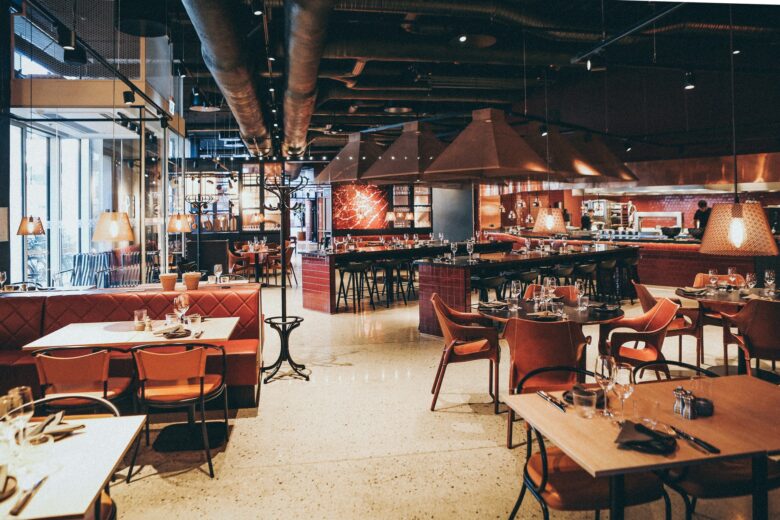Opening a restaurant might not seem too complex at the start, but in reality, there are a lot of tiny details that can make or break your business endeavor. So, it is crucial to have a strict plan on how to succeed in this sphere.
The following nine steps should serve you as a somewhat flexible guideline until you start seeing some success.
1. Develop a Business Plan
First and foremost, you should pay attention to the business plan. The basis for a good business plan is the same regardless of the type of company. It includes the overall concept, company description, design of the working area, financials, etc.
However, a restaurant’s business plan should also cover more specific aspects such as a sample menu, service style, the target market, and most importantly – your management team. It is better to put much effort into this step and think of every detail. For more information on how to write a restaurant business plan, click here.
2. Form an Idea

Source: unsplash.com
Is it going to be an Italian or a Japanese restaurant? Do you want to make the restaurant more upscale and dedicated to fine dining, or are you looking for something more casual? You’ll need to have an answer to these questions (and lots of other similar ones) before you even think of starting the business up. Try to be unique and offer something that can’t be found in the other restaurants in your area.
You can also learn about trends in the restaurant business and investigate your competition. If in your area there are a lot of Italian restaurants, it is better to choose another cuisine for your one. The good idea is to create a “healthy food” menu option also because there are many people now who follow different types of diets (no-gluten, no-sugar and etc.)
3. Attract Investors
If you’re looking to open an elite restaurant with exceptional customer service and high-quality food, you’re going to need a lot of money. Fortunately, you don’t have to rely solely on your budget. If you’re capable of presenting your idea to others and convincing them that you’re dedicated, you’ll be able to attract investors. It’s not a guarantee, but it costs you nothing to try.
Nowadays, there are a lot of firms who may help you to find an investor, so investigate the market in your city and you will surely find such a firm.
4. Find a Good Location

Source: unsplash.com
Starting up a business in a location where there are already well-established restaurants is a recipe for failure. However, you also don’t want to choose a spot where there aren’t any people around who might be interested in trying out your food. The optimal and the least risky strategy is to choose the best of both worlds – aim for low competition (up to two restaurants) with medium-to-high traffic.
Moreover, you should decide if you want to rent the space for your restaurant or buy it.
5. Obtain a License
Depending on where you’re located, you’ll need to undergo either a fairly simple or a somewhat complex process to get all the necessary licenses. Licensing fees can also be pretty steep, so make sure to reserve a spot in your budget for that. The best way to find out about the licensing process is to contact your dedicated county office and ask about it.
6. Acquire Restaurant Equipment

Source: unsplash.com
Freezers, ovens, ice makers, chairs, tables – the list of essential restaurant equipment just keeps growing. The worst thing about it is that if you cheap out on any of these items, you’re going to regret it in the long run. Yes, it’s going to cost you a lot in the beginning, but at least you won’t have to spend money on the repairs later on as you would if you were to acquire second-hand stuff. If you plan to rotate your menu frequently, consider investing in digital signage from http://www.rssts.com/digital-menu-boards/.
7. Hire Employees
As an owner, you won’t be able to handle all the aspects of running a restaurant, so you’ll need a good manager first and foremost. When you have a solid team at the top, you should focus on finding experienced chefs, cooks, and waiters. Place job advertisements online, and be firm with your requirements. Consider investing in an online food handler certification course such as those offered by 360 Training for your employees, to ensure food safety and hygiene practices are observed by all employees during day-to-day operations. One inexperienced, lazy employee can cause a whole barrage of problems.
It is also better to have a hiring manager, that conducts interviews and has large experience in this sphere.
8. Get an Online Presence

Source: unsplash.com
Before visiting your restaurant, people will almost always run a quick Internet search to see if you’re worth their time. As a result, you should have a modern, sleek website that’s going to outline your restaurant’s main purpose. Also, make sure to ask your guests to leave a recommendation on their social media platforms if they’ve enjoyed their visit.
After creating a website, you should provide your guests with interesting data – for example, create a blog and write informative articles about the cuisine, restaurants, destinations and etc.
Make use of SEO to obtain top ranking for your website and attract more people to your place.
You can use SMM (social media marketing) strategy, it is a very powerful way to obtain customers. Use Instagram and Facebook as the main platforms – create visual content and attract clients. The visual content is very important, so you can find the photographer and make a photoset of your restaurant and the meals there.
9. Implement Novelties
You have to be innovative and think about your clients all the time. This means making their visit hassle-free and as enjoyable as possible. This can be through the support for various payment methods (cards, mobile payment), a tablet-ordering system, 24/7 delivery, and last but not least – a restaurant reservation system. For example, EatApp allows people to make online reservations at any of its clients’ restaurants. The live display of available seats immediately shows potential guests whether there’s an open spot or not. Also, it makes it much easier for restaurant owners to keep track of everything since the whole restaurant status is available right on their laptop/phone screens.
